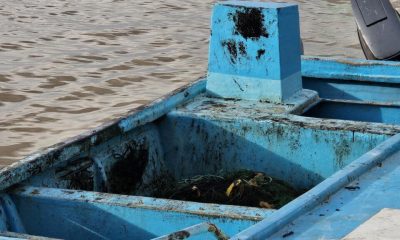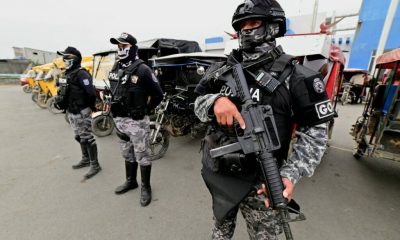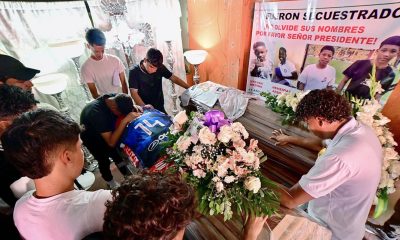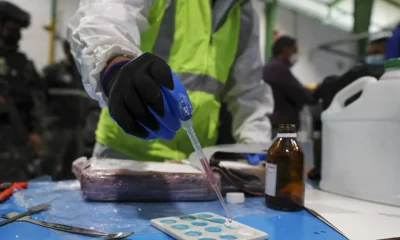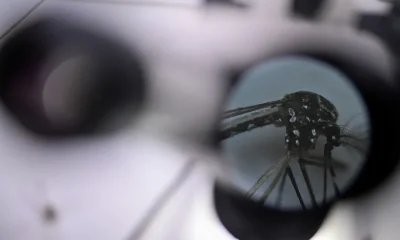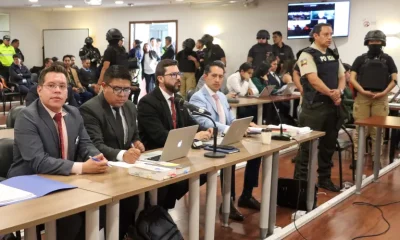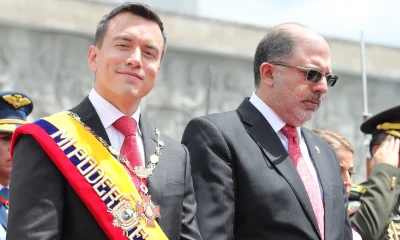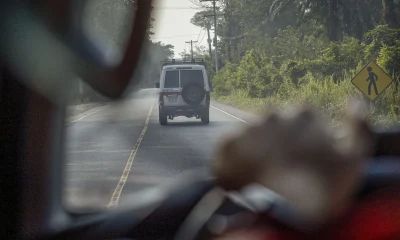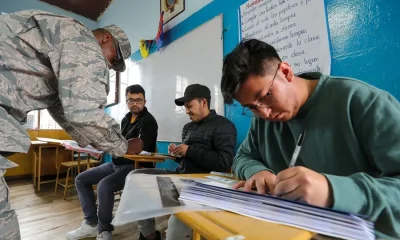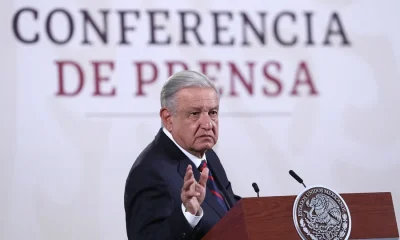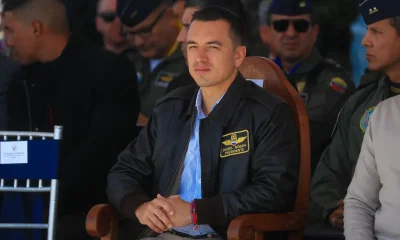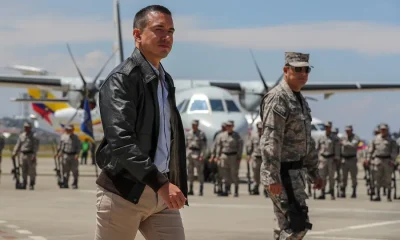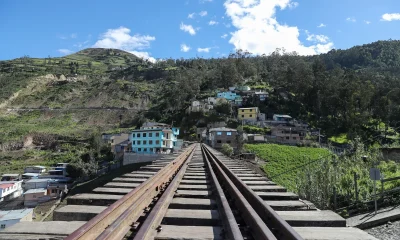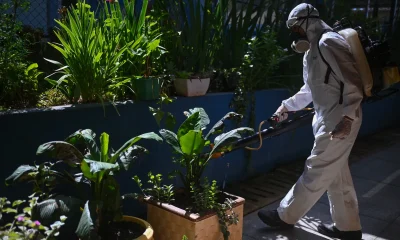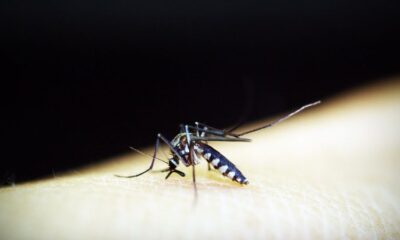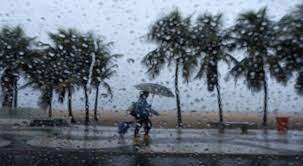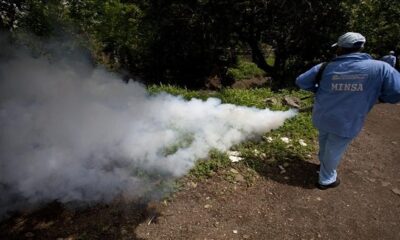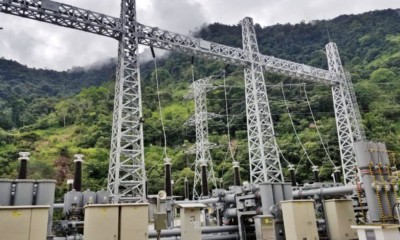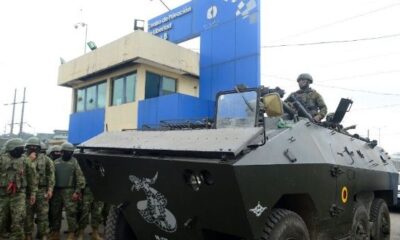International
Ecuador registered 173 cases of dengue fever since the beginning of the year
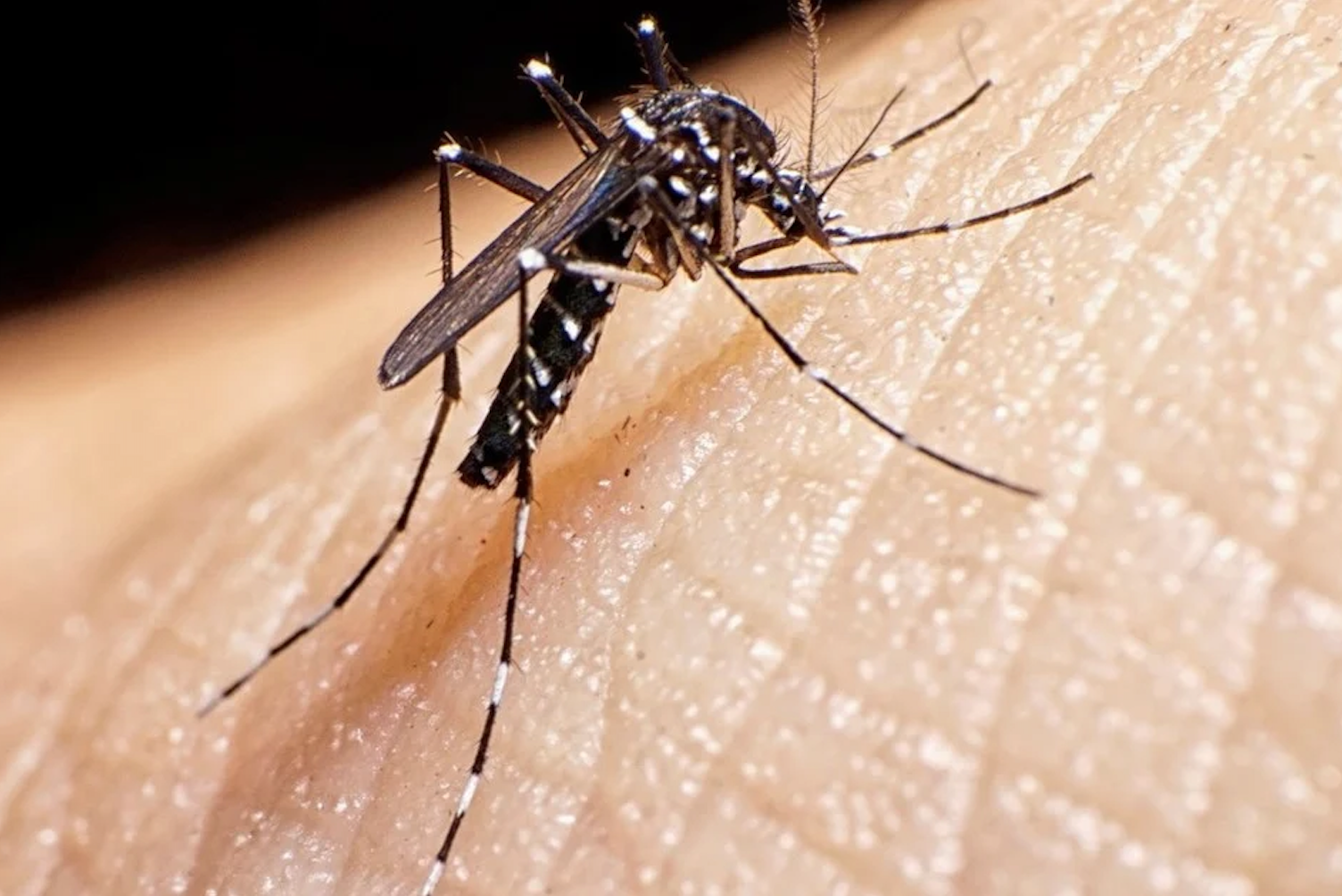
February 3rd |
This year alone, Ecuador has already registered 173 cases of dengue fever in the localities that make up zone 8 of the country, composed of Guayaquil, Durán and Samborondón, according to the Ministry of Public Health.
The epidemiological report of the health portfolio indicates that there are 95 patients in Guayaquil and 78 in Durán, while in Samborondón there are still no cases of this disease. Health authorities have reported a slight increase compared to the same period last year, when 162 cases were registered. In total, during 2022, there were 2,600 patients with dengue fever in these three cities.
As part of the preventive and health work, brigades of the Ministry of Health travel through neighborhoods of Guayaquil to carry out evaluations of water reservoirs in homes that usually attract dengue mosquitoes.
During the rounds, health officials also check buckets, containers and other objects where water can stagnate.
The Ministry of Health has also enabled the reception of people who can attend the health centers and request a visit from the Ministry’s brigades to their neighborhoods.
In addition, as part of their work, they tested the water found in these reservoirs and found Aedes aegypti aquatic larvae, which are vectors of tropical diseases. This is a domestic mosquito, which lives in and near houses and breeds in any artificial or natural container containing water.
The dengue-transmitting mosquito lays its eggs in artificial containers containing water, mainly barrels and tires, which are in or around houses, schools or workplaces. Aedes aegypti eggs can withstand dry environmental conditions for more than a year. This is considered one of the most important strategies the species employs to survive and spread, according to the Pan American Health Organization (PAHO).
To eliminate mosquitoes, PAHO recommends the following actions: avoid collecting water in outdoor containers (flower pots, bottles or other containers that can collect water) so that they do not become breeding sites for mosquitoes; adequately cover water tanks and reservoirs to keep mosquitoes away; avoid accumulating garbage; dispose of garbage in closed plastic bags.
Several residents of the neighborhoods of Guayaquil and Duran have testified that, due to the storm, the presence of mosquitoes increases, especially in areas with lots of vegetation such as parks, where water also accumulates.
According to PAHO, dengue is a disease transmitted by the bite of an infected mosquito and can affect people of all ages. Symptoms range from a mild fever to a disabling fever, as well as severe headache, pain behind the eyes, muscle and joint pain, and erythema – reddening of the skin.
The disease may progress and become severe. In this state there is respiratory distress or severe organ damage.
Dengue, according to PAHO, has a seasonal behavior. In countries of the Southern hemisphere, most cases occur during the first half of the year, while in the Northern hemisphere, cases occur mostly in the second half of the year. This pattern of behavior corresponds to the warmest and rainiest months.
PAHO data indicate that around 500 million people in the Americas are at risk of contracting dengue. Aedes aegypti, which is the mosquito vector for dengue, is widely distributed throughout the territory, with the exception of Canada and continental Chile, which are dengue-free. In the case of Uruguay, although the mosquito is present, no cases of dengue fever have been reported.
International
Fire at substation triggers major blackout in San Francisco
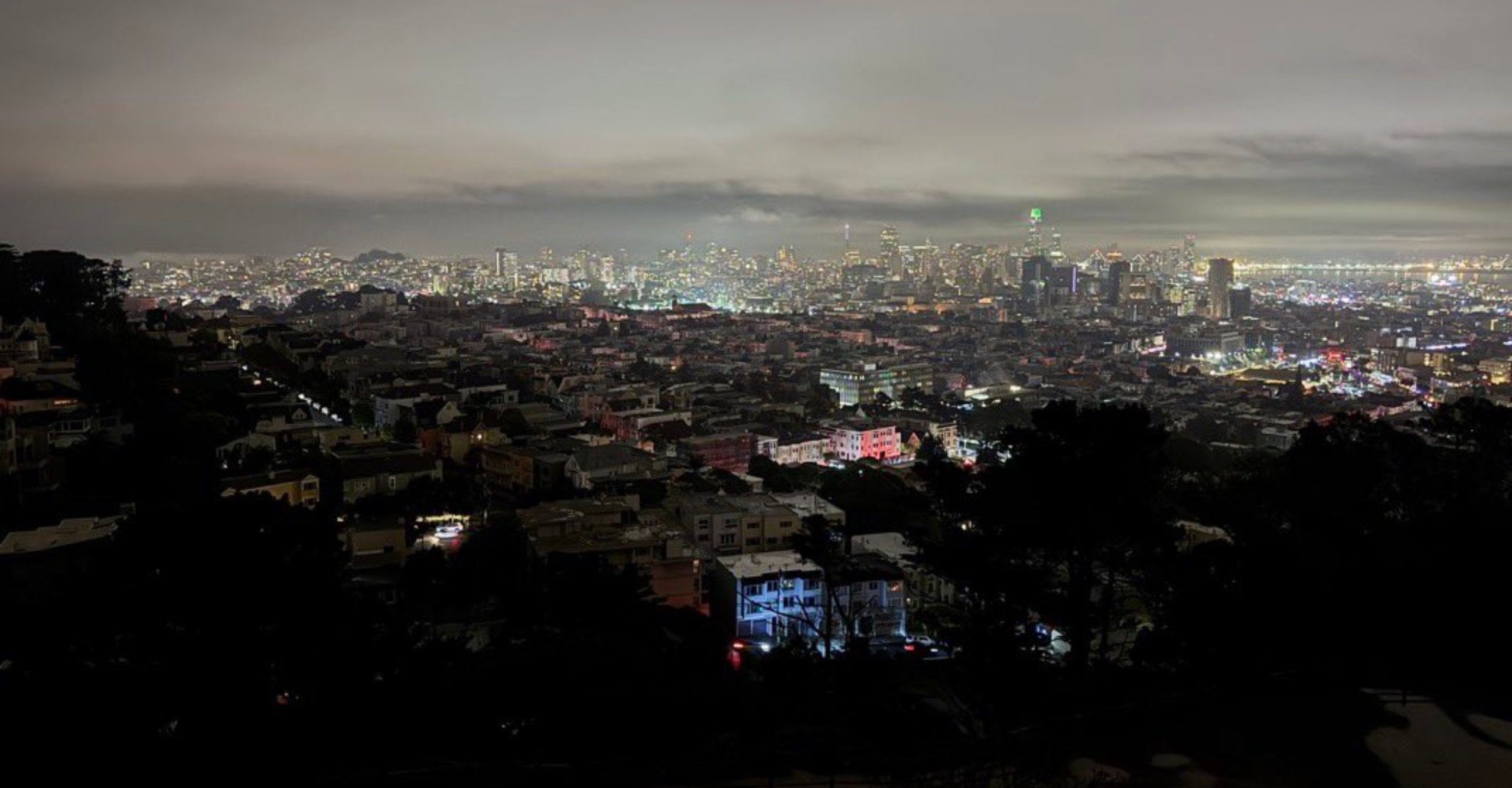
The U.S. city of San Francisco was plunged into darkness Saturday night after a power outage left about 130,000 customers without electricity, although the utility company said service was restored to most users within hours.
Pacific Gas & Electric Company (PG&E) said in a statement posted on X that nearly 90,000 homes had their power restored by 9:00 p.m. local time (05:00 GMT on Sunday), while the remaining 40,000 customers were expected to have service restored overnight.
Large areas of the city, a major technology hub with a population of around 800,000, were affected by the blackout, which disrupted public transportation and left traffic lights out of service during the busy weekend before Christmas, a crucial period for retail businesses.
“I know it’s been a difficult day,” San Francisco Mayor Daniel Lurie said in a video posted on social media from the city’s emergency operations center. “There has been progress, but for those still without power, we want to make sure they are safe and checking in on their neighbors,” he added.
Lurie said police officers and firefighters advised residents to stay home as much as possible. He also noted that officers and traffic inspectors were deployed to manage intersections where traffic lights were not functioning.
The mayor confirmed that the outage was caused by a fire at an electrical substation. Parts of the city were also covered in fog, further complicating conditions during the incident.
As a result of the blackout, many businesses were forced to close despite it being the weekend before Christmas. The sudden drop in shopper traffic ahead of the holiday is “devastating” for retailers, the manager of home goods store Black & Gold told the San Francisco Chronicle.
International
Cristina Kirchner recovering after appendicitis surgery in Buenos Aires
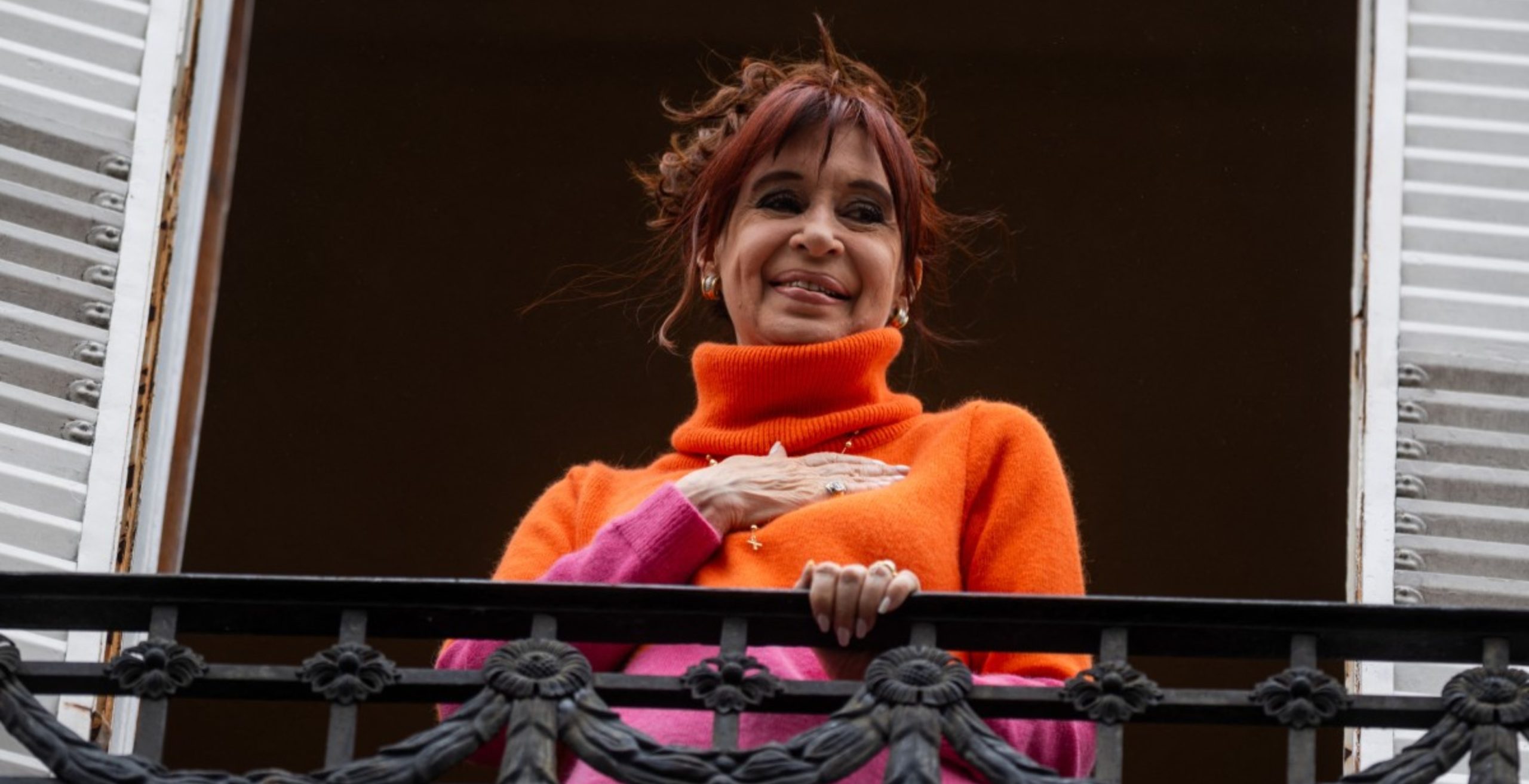
Former Argentine President Cristina Kirchner underwent surgery on Saturday after being diagnosed with appendicitis and is recovering “without complications,” according to a medical report released by the Otamendi Sanatorium.
Kirchner was admitted to the Buenos Aires medical center on Saturday after experiencing abdominal pain. Doctors performed a laparoscopic procedure that confirmed a diagnosis of “appendicitis with localized peritonitis,” the statement said, adding that her post-operative recovery has been progressing without complications.
The former president was transferred to the clinic with judicial authorization from her apartment in Buenos Aires, where she is serving a six-year sentence under house arrest for corruption.
International
Argentina detects first local cases of Influenza A (H3N2) Subclade K

Argentina’s National Administration of Laboratories and Health Institutes (ANLIS) “Dr. Carlos G. Malbrán” has confirmed the detection of three cases of influenza A (H3N2) corresponding to subclade K in the country. These are the first locally recorded cases of this variant, which has become predominant in several countries in the Northern Hemisphere in recent months and is associated with higher transmissibility.
The cases were identified through the National Network of Laboratories and Sentinel Units and confirmed by the National Reference Laboratory of INEI-ANLIS using genomic sequencing techniques. According to health authorities, the cases involve two adolescents from the province of Santa Cruz, detected as part of the Ambulatory Monitoring Strategy for Acute Respiratory Infections, and a child who had been hospitalized in the Autonomous City of Buenos Aires.
In all three cases, patients experienced mild illness and recovered without complications. Officials did not specify whether any of the affected individuals had a recent travel history.
The jurisdictions involved have already launched the corresponding epidemiological investigations and are responsible for ensuring timely medical care for the detected cases. According to the latest integrated surveillance report, the circulation of influenza and other respiratory viruses in Argentina remains within expected levels for this time of year.
-

 International2 days ago
International2 days agoShakira’s El Salvador concerts sell out in hours, fans demand more dates
-

 International2 days ago
International2 days agoPentagon confirms Trump pick for SouthCom as U.S. military pressure grows
-
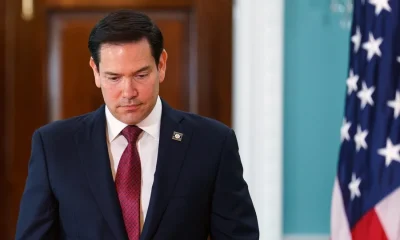
 International4 days ago
International4 days agoRubio rules out 2028 presidential bid if Vance runs
-

 Central America4 days ago
Central America4 days agoArrests and clashes in Tegucigalpa as vote count continues after Honduras election
-

 International2 days ago
International2 days agoTrump moves to reclassify marijuana as less dangerous substance
-

 International2 days ago
International2 days agoArgentina detects first local cases of Influenza A (H3N2) Subclade K
-
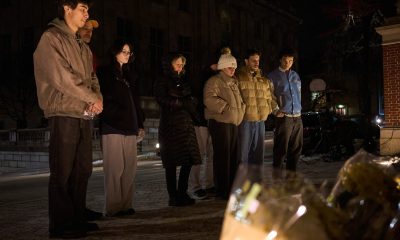
 International4 days ago
International4 days agoAuthorities search for armed and dangerous suspect in fatal Brown University attack
-

 International11 hours ago
International11 hours agoFire at substation triggers major blackout in San Francisco
-

 International11 hours ago
International11 hours agoCristina Kirchner recovering after appendicitis surgery in Buenos Aires



























